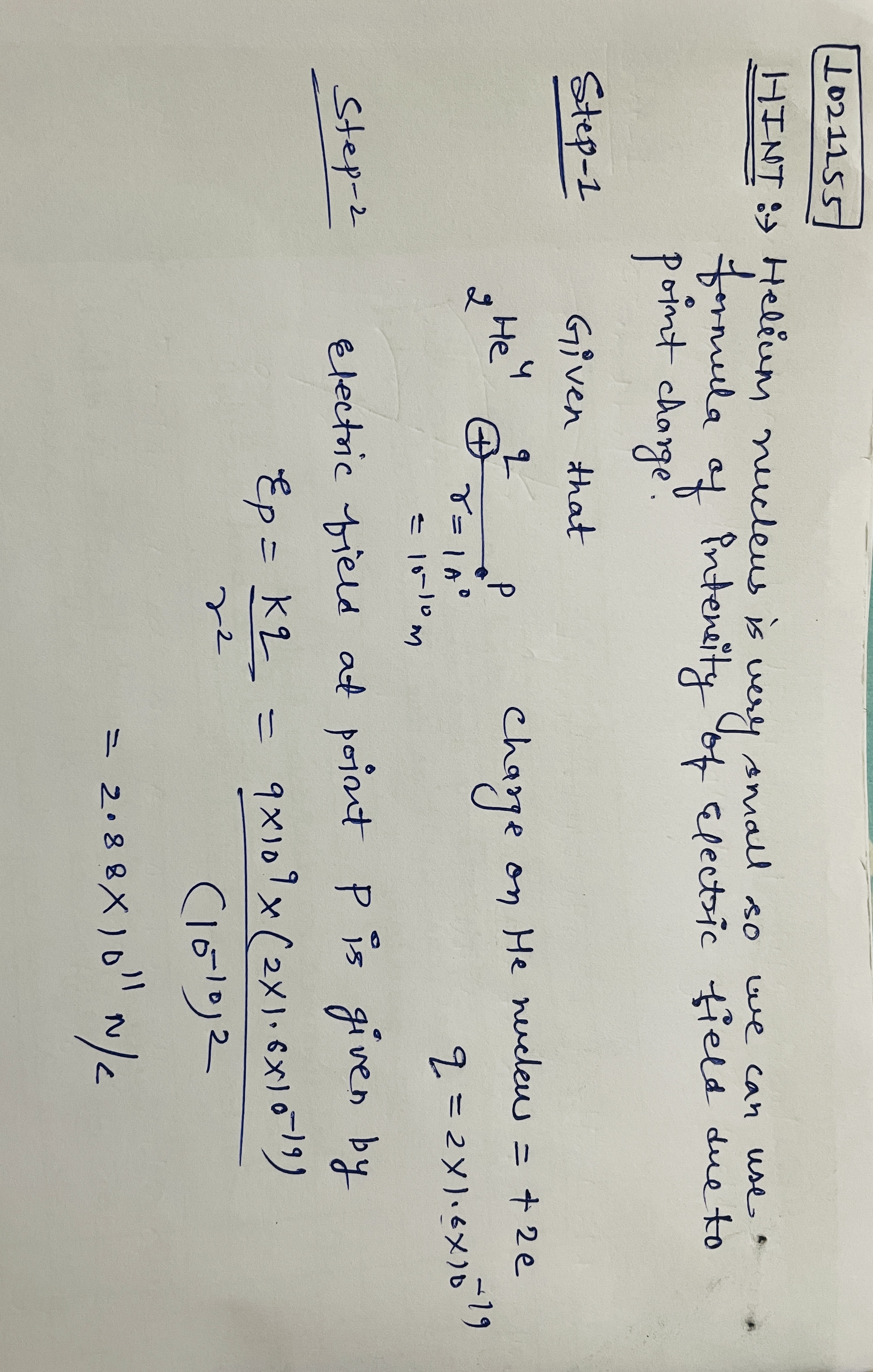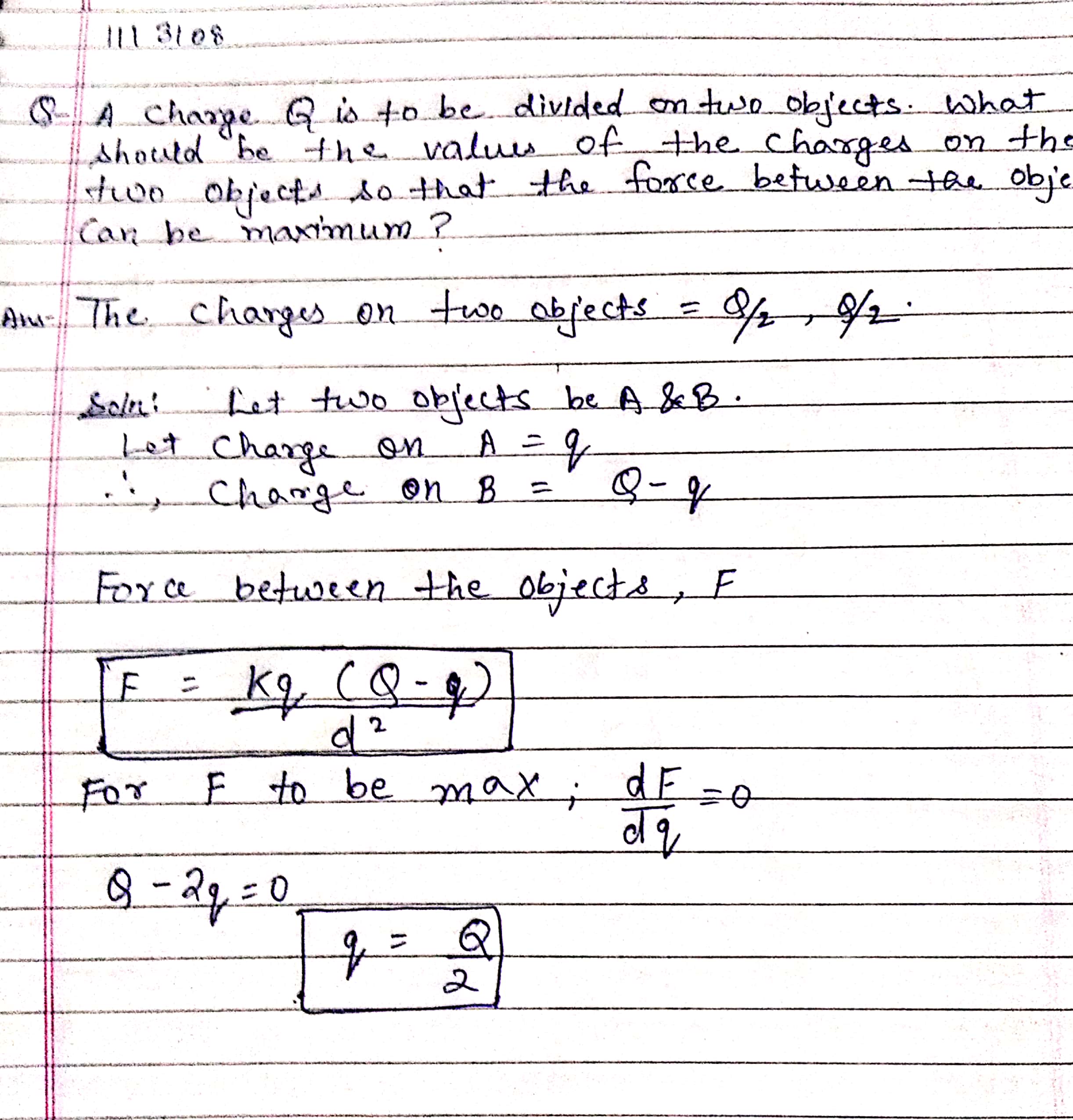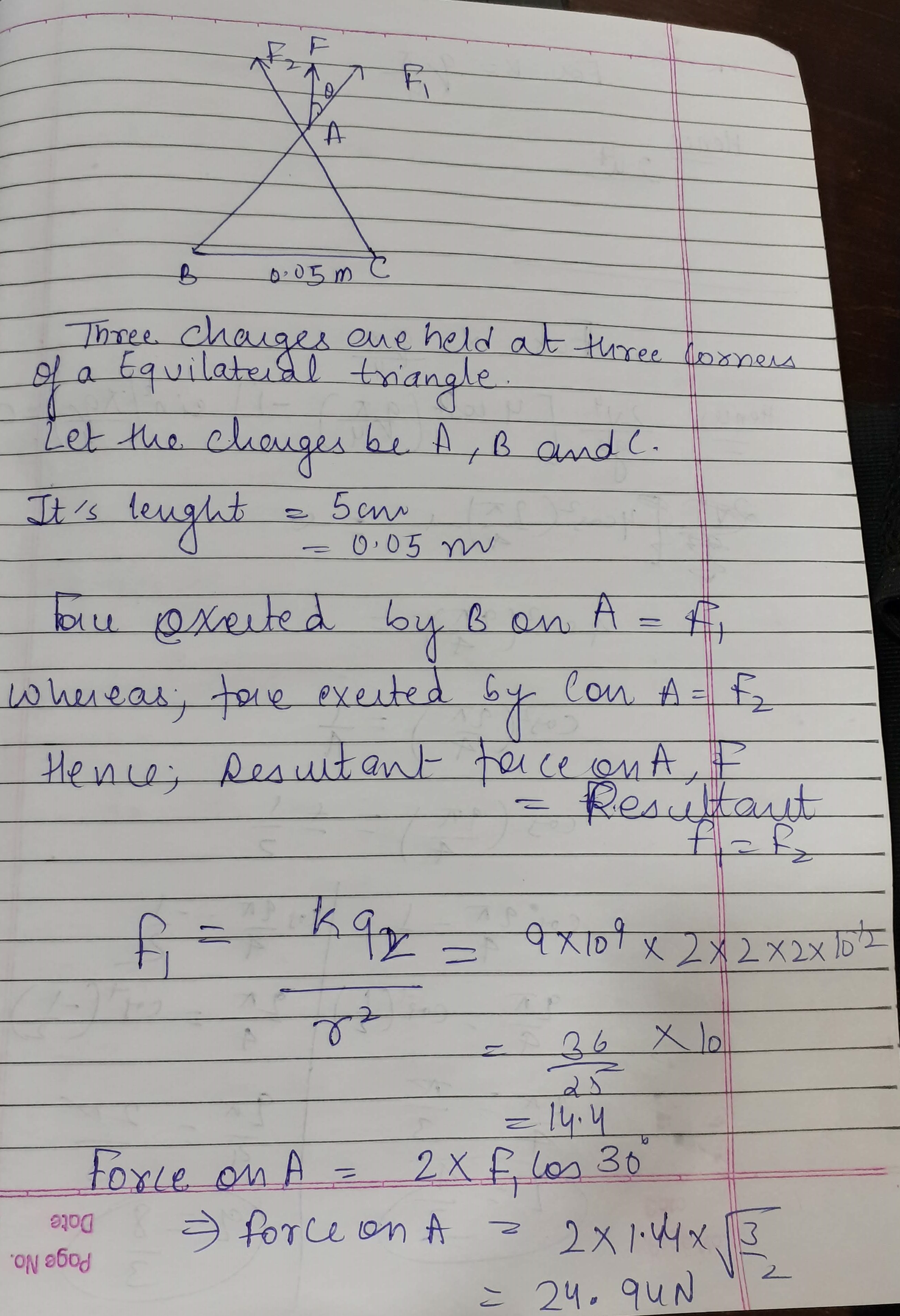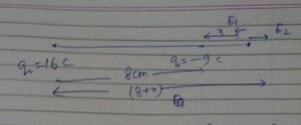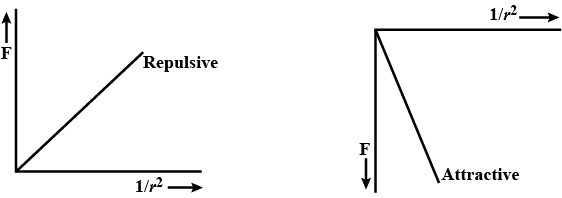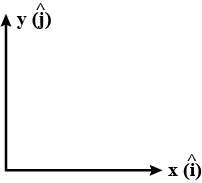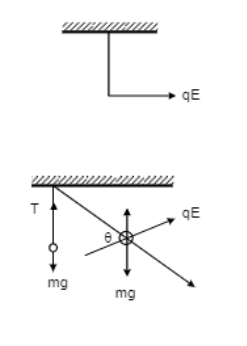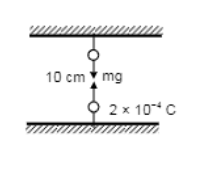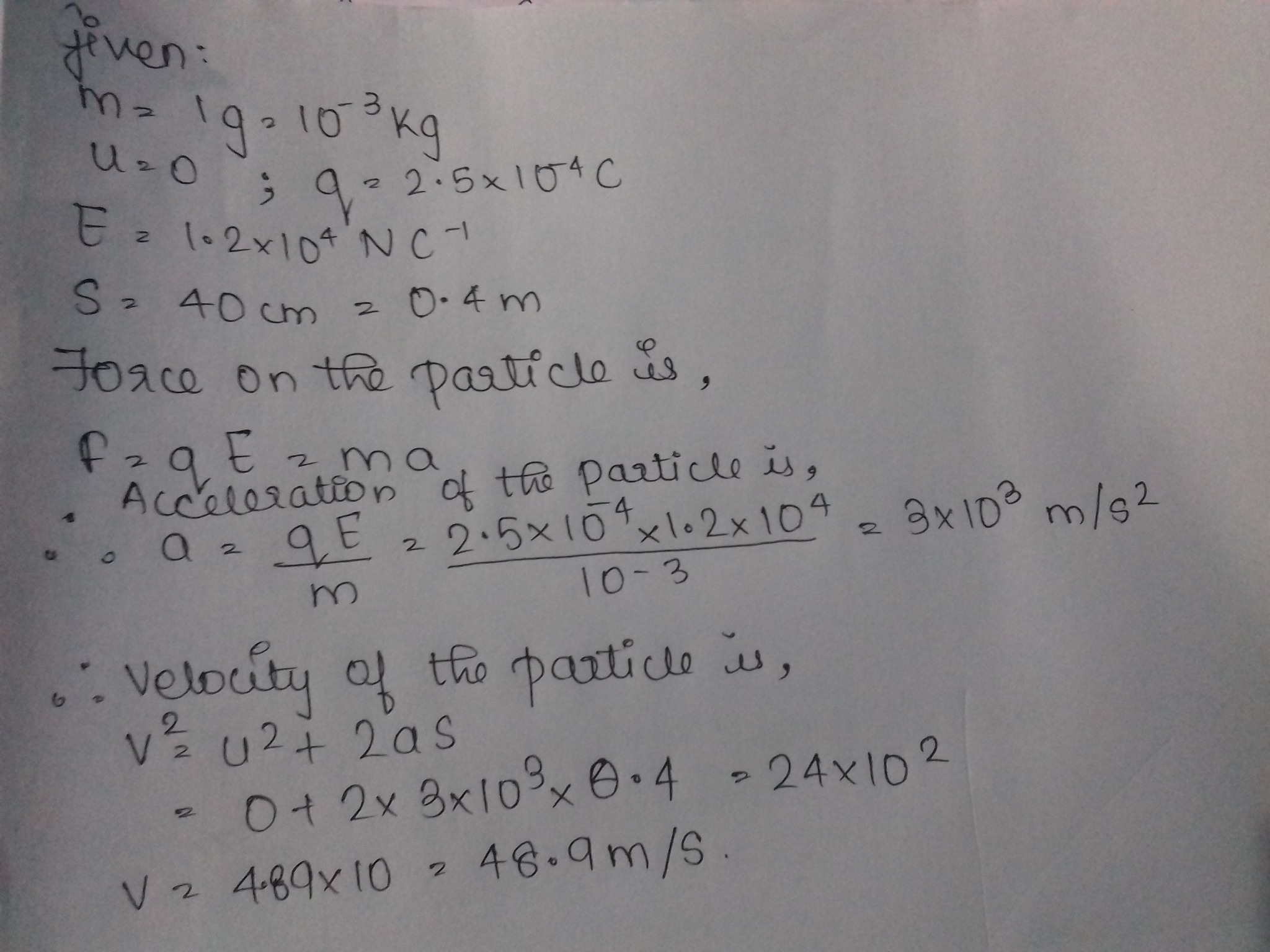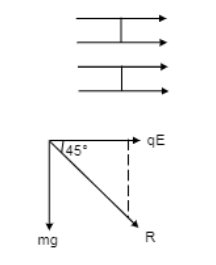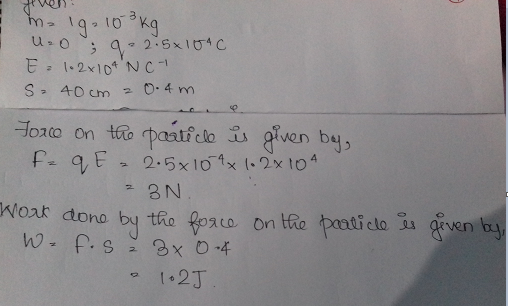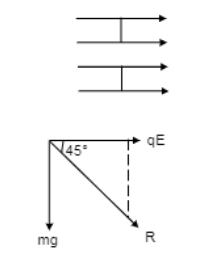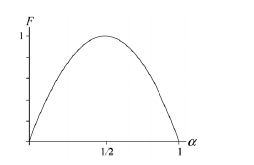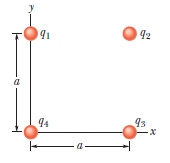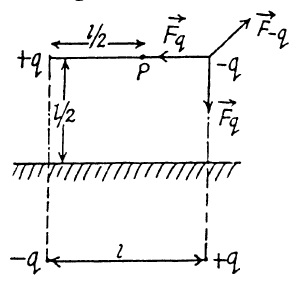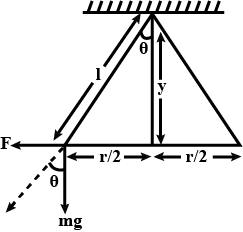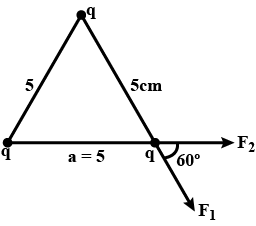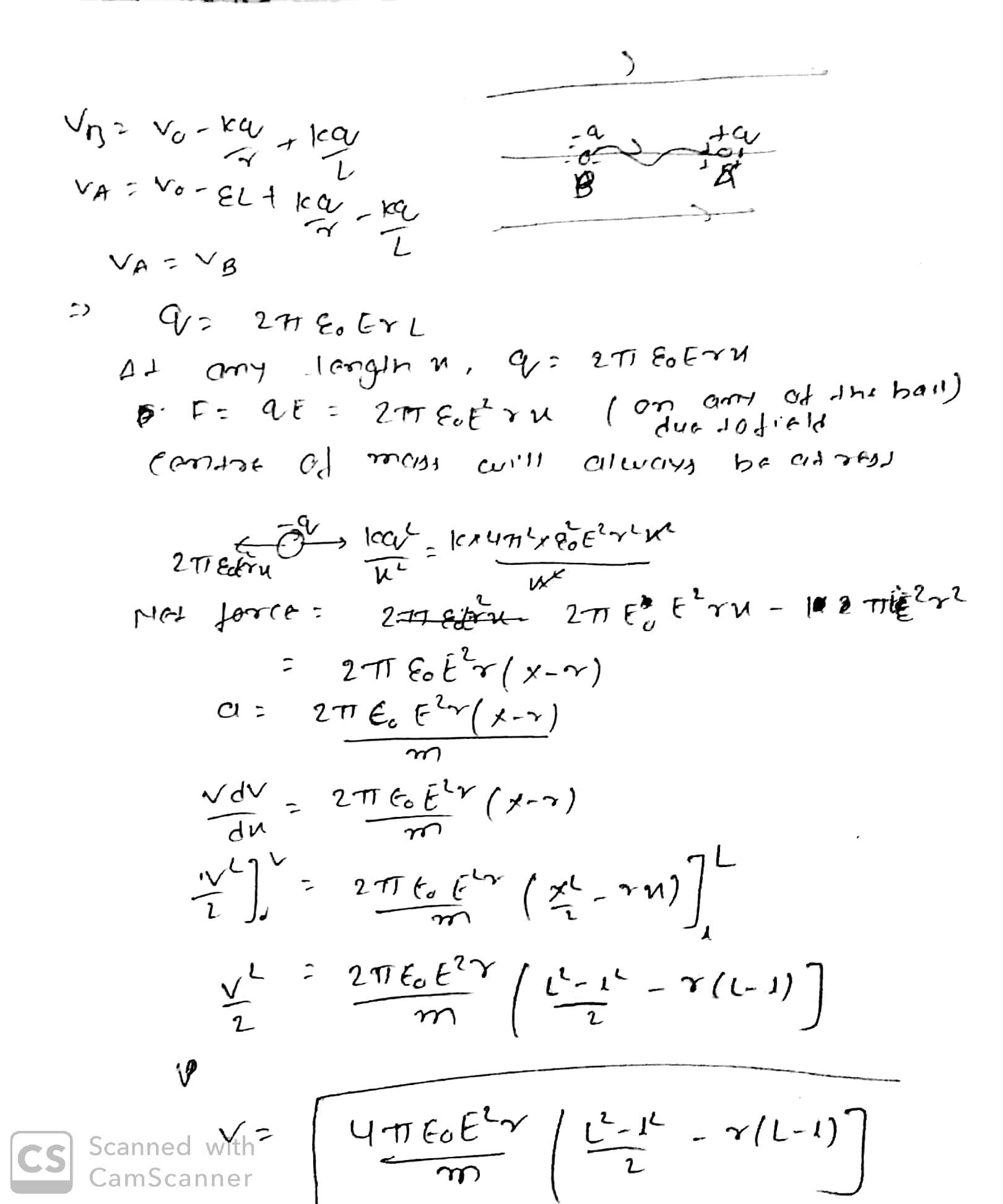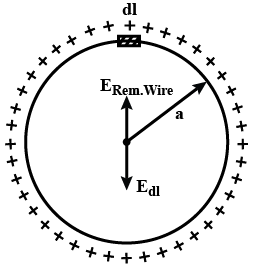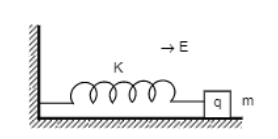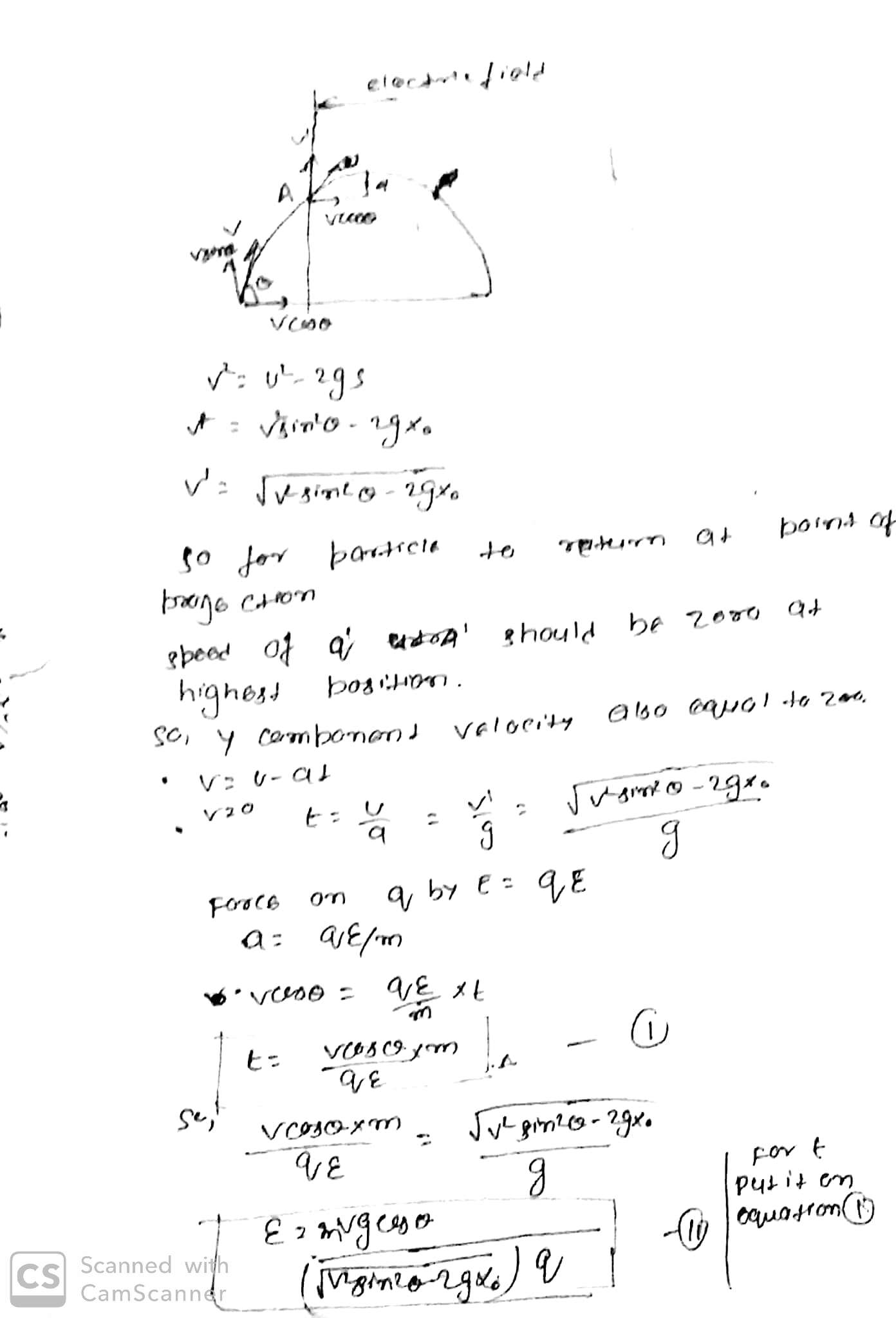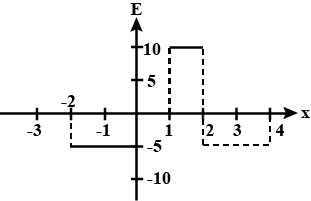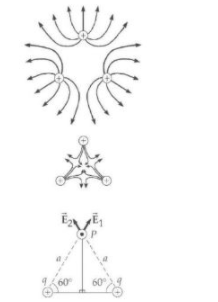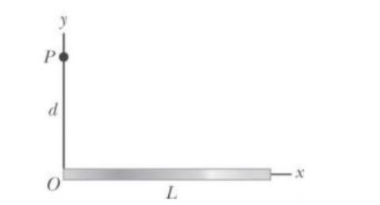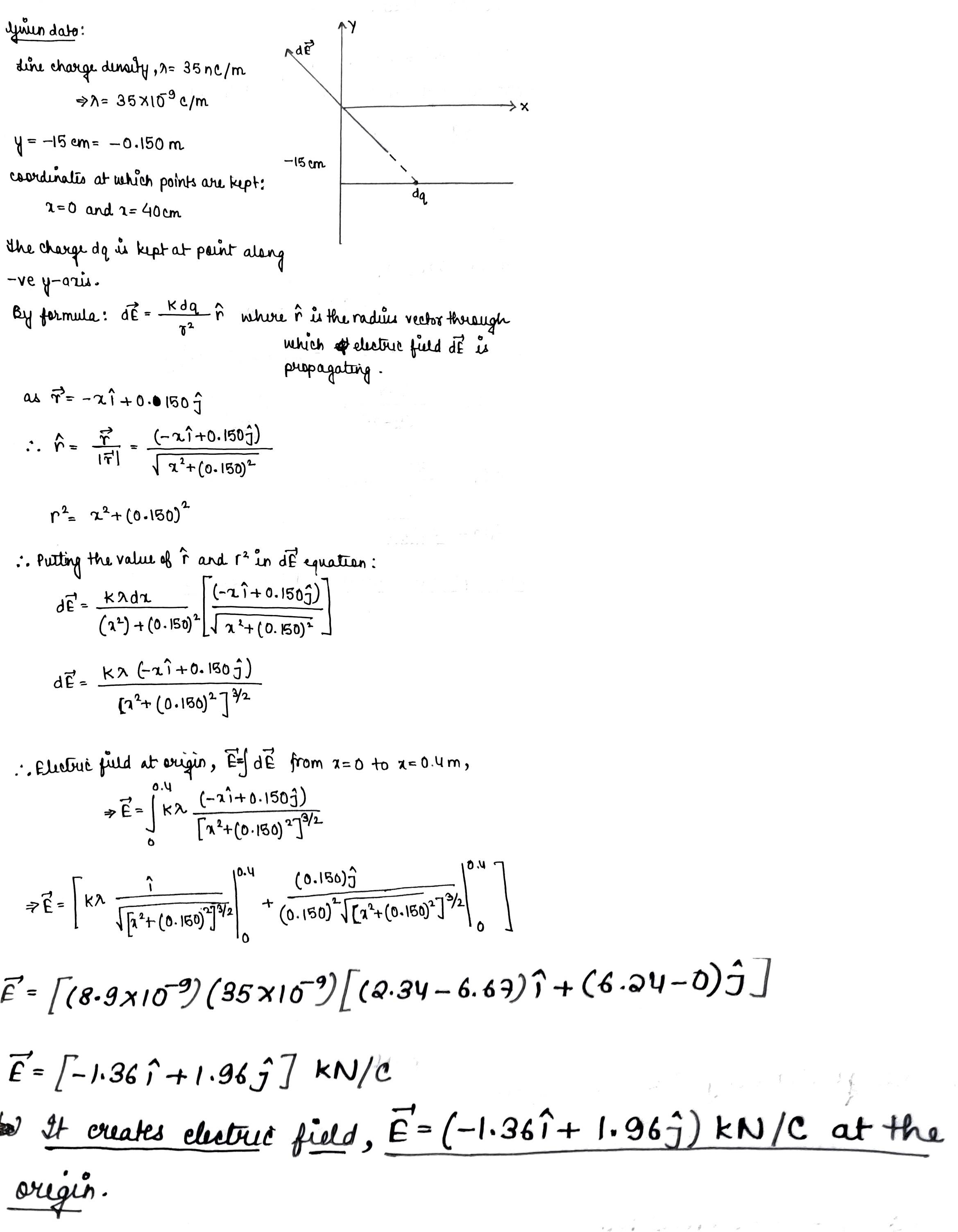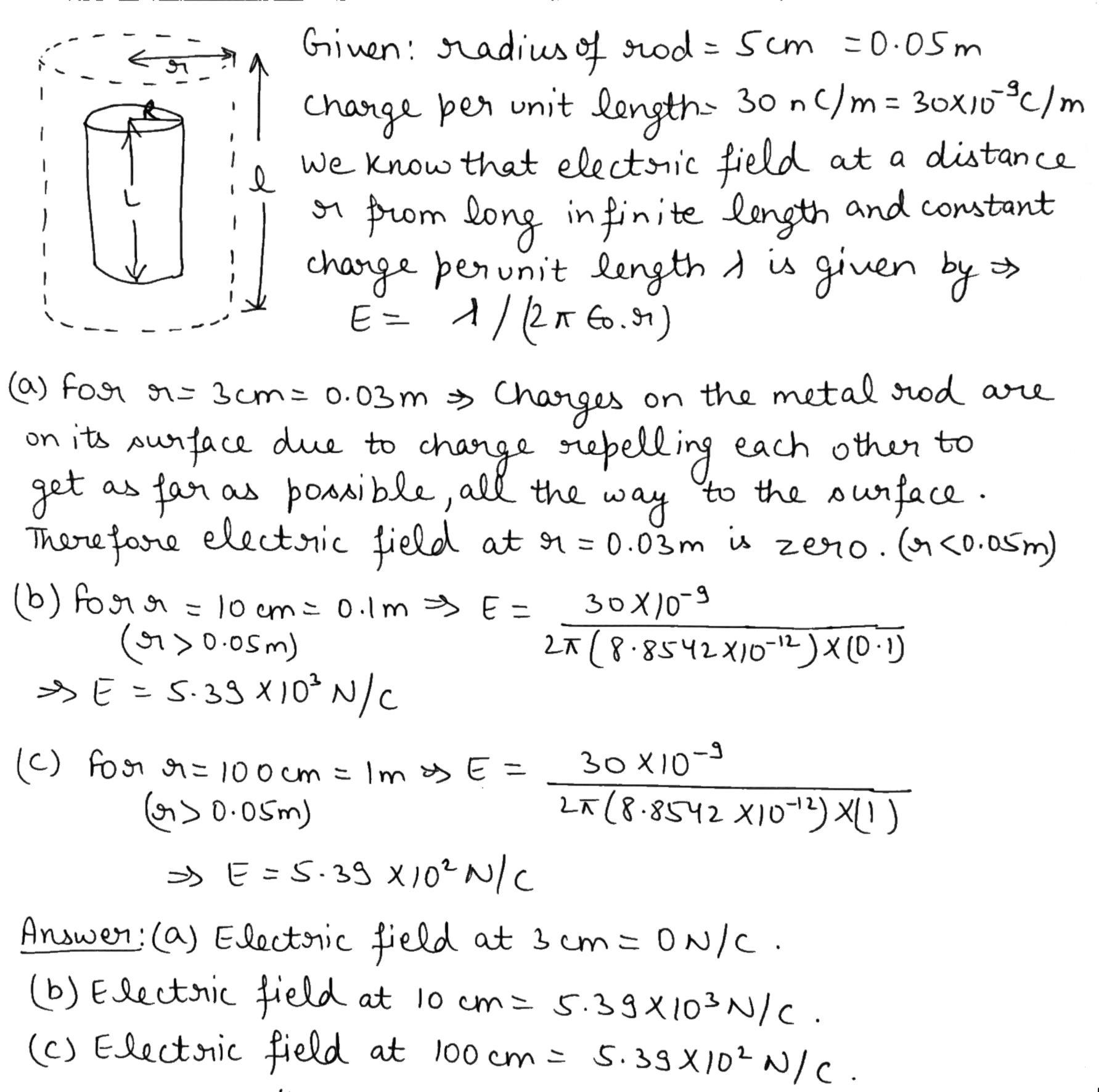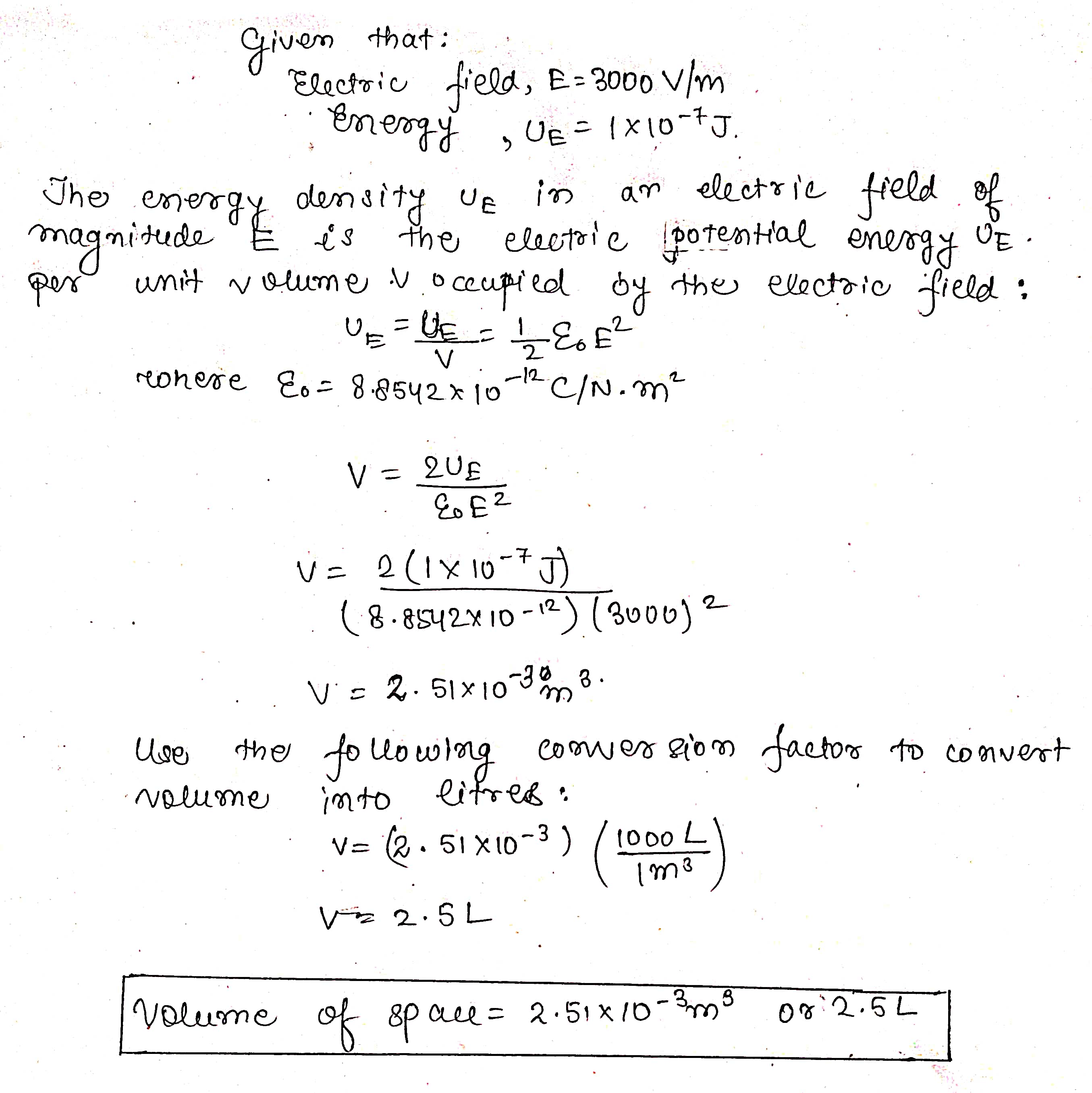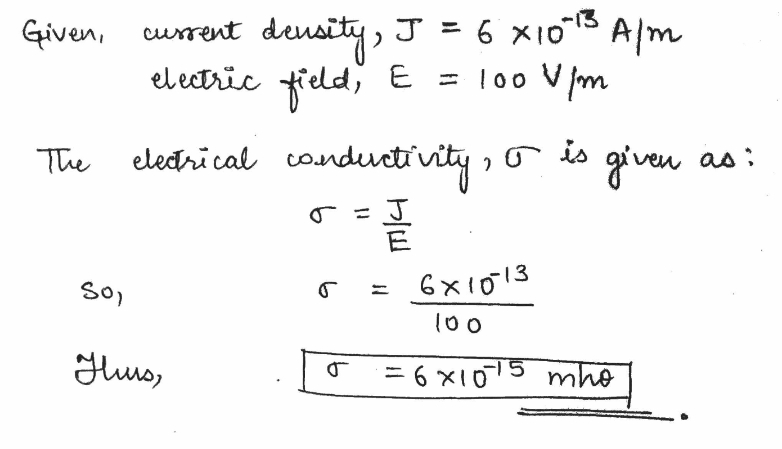Electric Charges And Fields - Class 12 Engineering Physics - Extra Questions
Find the excess (equal in number) of electrons that must be placed on each of two small spheres spaced 3 cm apart with a force of repulsion between the spheres to be $$10^{-19}N$$
The electric force on a charge $$q_1$$ due to $$q_2$$ is $$(4\widehat{i} - 3\widehat{j})$$ N. What is the force on $$q_2$$ due to $$q_1$$?
Does the force on a charge due to another charge depend on the charges present nearby?
Is there any lower limit to the electric force between two particles placed at a certain distance?
Find the coulombic force between two $$\alpha$$ - particles separated by a distance of 8.2 fermi, in air.
Two charged particles having charge $$2\times 10^{-8} C$$ each are joined by an insulating string of length 100 cm. The system is kept on a horizontal table. Find the tension in the string.
Two point charges $$q_1$$ and $$q_2$$ are 3 m apart and their combined charge is $$20\mu C$$. If one repels the other with a force of 0.075 N, what are two charges?
Two identical spheres having charges $$+q_1$$ and $$+q_2$$ are kept at a distance "d". These two are brought in contact with an insulated handle and again separated to the same distance. Find the force $$F_2$$ between them in terms of initial force $$F_1$$.
Two identical condncting spheres, fixed in space, attract each other with an electrostatic force of 0.108 N when separated by 50.0 cm, center-to-center. A thin conducting wire then connects the spheres, When the wire is removed, the spheres repel each other with an electrostatic force of 0.0360 N. What were the initial charges on the spheres?
(a) Two insulated charged copper spheres A and B have their centres separated by a distance of 50 cm. What is the mutual force of electrostatic repulsion if the charge on each is $$6.5\times 10^{-7}$$ C? The radii of A and B are negligible compared to the distance of separation.(b) What is the force of repulsion if each sphere is charged double the above amount, and the distance between them is halved?
What is the force between two small charged spheres having charges of $$2\times 10^{-7}$$C and $$3\times 10^{-7}$$C placed 30 cm apart in air?
The electrostatic force on a small sphere of charge $$0.4\mu C$$ due to another small sphere of charge $$-0.8\mu C$$ in air is 0.2 N.
(a) What is the distance between the two spheres? (b) What is the force on the second sphere due to the first?
Exercise:[Two insulated charged copper spheres A and B have their centres separated by a distance of 50 cm. The charge on each is $$6.5\times 10^{7}$$ C? The radii of A and B are negligible compared to the distance of separation.
]Suppose the spheres A and B in Exercise have identical sizes. A third sphere of the same size but uncharged is brought in contact with the first, then brought in contact with the second, and finally removed from both. What is the new force of repulsion between A and B?
Calculate the height of the potential barrier for a head on collision of two deuterons.
The charge and coordinates of two charged particles held fixed in an $$y$$ plane are $$q_1=+3.0\ \mu C, x_1=3.5\ cm, y_1=0.50\ cm$$, and $$q_2 =-4.0\mu C, x_2 =-2.0\ cm, y_2 =1.5\ cm$$. Find
direction of the electrostatic force on particle $$2$$ due to tude ?
The electrostatic force on a small sphere of charge $$0.4\ \mu C$$ due to another small sphere of charge $$0.8\ \mu C$$ in air is $$0.2\ N$$.
(a) What is the distance between the two spheres?
(b) What is the force on the second sphere due to the first?
Two point charges of $$2\times 10^{-7}C$$ and $$1.0\times 10^{-7}$$ are $$1.0\ cm$$ apart. What is the magnitude of the field produced by either charge at the site of the other? Use standard value of $$1/4\pi \epsilon_{0}$$
The electrostatic force on a small sphere of charge $$0.4 \mu C$$ due to another small sphere of charge $$-0.8\mu C$$ in the air is $$0.2\ N$$.
What is the force on the second sphere due to the first?
The electrostatic force on a small sphere of charge $$0.4\mu C$$ due to another small sphere of charge $$-0.8\mu C$$ in the air is $$0.2\ N$$.
What is the distance between the two spheres?
Two equal charges placed in air and separated by a distance of $$2\ m$$ repel each other with a force of $$10^{-4}kgf$$. Calculate the magnitude of either of the charges.
The electrostatic force of repulsion between two equal positively charged ions is $$3.7\times 10^{-9}N$$, when they are separated by a distance of $$5\overset {\circ}{A}$$. How many electrons are missing from each ion?
A free pith-ball of $$8\ g$$ carries a positive charge of $$5\times 10^{-8}C$$. What must be the nature and magnitude of charge that should be given to a second pith-ball fixed $$5\ cm$$ vertically below the former pith-ball so that the upper pith-ball is stationary?
Two pith-balls of same weight are suspended from the same point by means of silk threads of equal length. On charging the pith-balls equally, they are found to repel each other to a certain distance and remain at equilibrium. Identify the forces responsible for them to remain under equilibrium.
A spherical ball of mass $$m$$ with charge q can revolve in a vertical plane at the end of string of length $$l.$$ At the centre of revolution, there is a second ball with a charge identical in sign & magnitude to that of the revolving ball. What minimum horizontal velocity must be imparted to the ball in the lowest position to enable it to make a full revolution?
Find the electric force between two protons separated by a distance of $$1$$ fermi ($$1$$ fermi$$ = {10^{ - 15}}m$$). The protons in a nucleus remain at a separation of this order.
Calculate the force between two charges each of $$20 milli$$ coulomb separated by a distance of $$20 cm.$$ in air.
If the distance between two point charges is increased by $$3%$$, then calculate the $$%$$ decrease in the force between them.
Two point charges 3C and -6C are 3 m apart. Find the force between them. State the nature of the force.
A charge of $$10\mu c$$ and $$ - 10\mu c$$ are placed 1cm apart. A third charge of is to be placed on the line passing through the two charges such that it is at equilibrium. Find the position of the third point. How does your answer change if the magnitude of the third charge is double?
Calculate the intensity of the electric field due to a helium nucleus at a distance of $$1\overset {\circ}{A}$$ from the nucleus.
The force of repulsion between two point charges is $$F$$, when these are at a distance of $$1\ m$$ apart. Now they are replaced by conducting spheres each of radii $$25\ cm$$ having the same charge as that of point charges. The distance between their centres is $$1\ m$$, then compare the force of repulsion in the two cases.
Two point charges separated by some distance, repel each other with a force $$F$$, what will be the force if the distance between them is halved?
Two particles with charges $$q_1$$ and $$q_2$$ are kept at a certain distance to exert force F on the other. If the distance is reduced to one-fifth, then the force between them is :
under mutual gravitational and electric force then calculate the order of $$\frac{Q}{M}$$ in SI units.
The force between two point charges is 100 N in air. Calculate the force if the distance between them is increased by 50%.
Two charge are placed at some separation in vacuum experiences a force $$F$$. If a charge are halfed with separation double and are placed in a medium of dielective constant $$4$$. Find the force experience b the
A charge q=1 $$\mu $$C is placed at point (1m,2m,4m),. find the electric field at point P(0m,-4m,3m).
Two charges of value $$ 2 \ \mu C $$ and $$ -50 \mu C$$ are placed 80 cm apart. Calculate the distance of the point from the smaller charge where the intensity is zero.
Two equal charges are placed in air are separated by a distance of 3 meter ,repel each other with a force of $$0.19\,f$$.calculate the magnitude of either of the charge ($$9.9 \times 10^{-1}C)$$
The point-like charges carrying charges of $$+3\times 10^{-9} C$$ and $$-5\times 10^{-9} C$$ are $$2 \ m$$ apart. Determine the magnitude of the force between them and state whether it is attractive or repulsive.
The force between two electrons when placed in air is equal to $$0.5$$ times the weight of an electron. Find the distance between two electrons (mass of electron $$=9.1\times {10}^{-31}kg$$)
A charge $$Q$$ is to be divided on two objects.What should be the
values of the charges on the two objects so that the force between the objects
can be maximum?
Two identical small conducting spheres carry charges of $$Q_1$$ and $$Q_2$$ with $$Q_1 >> Q_2$$. The spheres are d distance apart. The force they exert on each other is $$F_1$$. The spheres are made to touch each other and then separated by a distance d. The force they exert on each other now is $$F_2$$. Then $$F_1/F_2$$ is :-
Two point charges, five time as strong as the other repel each other with a force of $$ 1.8 \times 10^3 $$ N. When separated by a distance 1 m, calculate the value of charges?
Three equal charges, $$2\cdot 0\times { 10 }^{ -6 }C$$ each, are held fixed at the three corners of an equilateral triangle, of side $$5\ cm$$. Find the Coulomb force experienced by one of the charges, due to the other two.
A metal plate of area $$0.01\ m^{2}$$ carries a charge of $$100\ \mu C$$. Calculate the outward pull on one side of the plate. $$[k=1]$$
Two point charges of $$+16\mu C$$ and $$-9\mu C$$ are placed $$8\ cm$$ apart in air. Determine the position of the point at which the resultant field is zero.
Plot a graph showing the variation of coulomb force $$(F)$$ versus $$\left (\dfrac {1}{r^{2}}\right )$$ where $$r$$ is the distance between the two charges of each pair of charges : $$(1\mu C, 2\mu C)$$ and $$(2\mu C, -3mu C)$$. Interpret the graphs obtained.
A particle of charge $$2 \mu C$$ and mass $$1.6 g$$ is moving with a velocity $$4 \hat{i} ms^{-1} $$. At $$t = 0$$ the particle enters in a region having an electric field $$\vec{E}$$ (in $$NC^{-1}) = 80 \hat{i} + 60 \hat{j}$$. Find the velocity of the particle at $$t = 5 s$$.
Two point charges of $$+1 \mu C$$ and $$+4 \mu C$$ are kept $$30 cm$$ apart. How far from the $$+1 \mu C$$ charge on the line joining the two charge, will the net electric field be zero ?
A pendulum bob of mass $$80$$mg and carrying a charge of $$2\times 10^{-8}$$C is at rest in a uniform, horizontal electric field of $$20 kVm^{-1}$$. Find the tension in the thread.
A particle of mass m and charge q is thrown at a speed u against a uniform electric field E. How much distance will it travel before coming to momentary rest?
A particle having a charge of $$2.0\times 10^{-4}$$C is placed directly below and at a separation of $$10$$cm from the bob of a simple pendulum at rest. The mass of the bob is $$100$$g. What charge should the bob be given so that the string becomes loose?
A particle of mass $$1$$ g and charge $$2.5\times 10^{-4}$$C is released from rest in an electric field of $$1.2\times 10^{4}NC^{-1}$$. How long will it take for the particle to travel a distance of $$40$$cm?
A ball of mass $$100$$g and having a charge of $$4.9\times 10^{-5}$$C is released from rest in a region where a horizontal electric field of $$2.0\times 10^4N C^{-1}$$ exists. Find the resulatnt force acting on the ball.
A long cylindrical volume contains a uniformly distributed charge of density $$\rho$$. Find the electric field at a point $$P$$ inside the cylindrical volume at a distance $$x$$ from its axis.

A particle of mass $$1$$ g and charge $$2.5\times 10^{-4}$$C is released from rest in an electric field of $$1.2\times 10^{4}NC^{-1}$$. What will be the speed of the particle after travelling the distance of 40cm?
Two particles of charges and masses$$ (+q_1, m_1)$$ and $$(-q_2, m_2) $$ are released at different locations in a uniform electric field E in free space. If their separation remains unchanged, find the separation between them.
A copper atom consists of copper nucleus surrounded by $$29$$ electrons. The atomic weight of copper is $$63.5g$$ $${mol}^{-1}$$. Let us now take two pieces of copper each weighing $$10g$$. Let us consider one electron from one piece is transferred to another from every $$1000$$ atoms in a piece.
(a) Find the magnitude of charge appearing on each piece
(b) What will be the coulomb force between the two pieces after the transfer of electrons if they are $$10cm$$ apart?
(Avagadro's number $$=6\times {10}^{23}$$ $${mol}^{-1}$$)
A ball of mass $$100$$g and having a charge of $$4.9\times 10^{-8}$$C is released from rest in a region where a horizontal electric field of $$2.0\times 10^4N C^{-1}$$ exists. Where will the ball be at the end of $$2s$$?
A particle of mass $$1$$ g and charge $$2.5\times 10^{-4}$$C is released from rest in an electric field of $$1.2\times 10^{4}NC^{-1}$$. How much is the work done by the electric force on the particle as it moves for 40cm?
A grounded metallic ball of radius r is placed on the centre of a uniformly charged thin insulating disc of radius$$ R (R >> r). $$ If total charge on the Disc is Q, find force of electrostatic interaction between the ball and the disc.
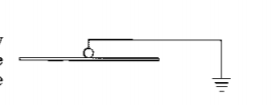
A ball of mass $$100$$g and having a charge of $$4.9\times 10^{-5}$$C is released from rest in a region where a horizontal electric field of $$2.0\times 10^4N C^{-1}$$ exists. What will be the path of the ball?
Three particles, each with positive charge $$Q$$, form an equilateral triangle, with each side of length $$d$$. What is the magnitude of the electric field produced by the particles at the midpoint of any side?
What is the acceleration of an electron in an uniform electric field of magnitude $$1.40\times 10^6\ N/C$$?
Two tiny spherical water drops with identical charges of $$-1.00\times 10^{-16}C$$, have a center-to-center separation of $$1.00\ cm$$.
What is the magnitude of the electrostatic force acting between them?
What is the magnitude of the electrostatic force between a singly charged sodium ion ($$Na^{+}$$, of charge $$+e$$) and an adjacent singly charged chlorine ion ($$Cl^{-}$$, of charge $$-e$$) in a salt crystal if their separation is $$2.82\times 10^{-10}m$$?
A charge of $$6.0 \mu C$$ is to be split into two parts that are then separated by $$3.0\ mm.$$ What is the maximum possible magnitude of the electrostatic force between those two parts?
The charge and coordinates of two charged particles held fixed in an $$y$$ plane are $$q_1=+3.0\ \mu C, x_1=3.5\ cm, y_1=0.50\ cm$$, and $$q_2 =-4.0\mu C, x_2 =-2.0\ cm, y_2 =1.5\ cm$$. Find
magnitude?
What would be the magnitude of the electrostatic force between two $$1.00\ C$$ point charges separated by a distance of $$1.00\ km$$ if such point charges existed (they do not) and this configuration could be set up?
In figure, particle $$1$$ and $$2$$ have charge $$20.0\ \mu C$$ each and are held at separation distance $$d=1.50\ m$$.
What is the magnitude of the electrostatic force on particle $$1$$ due to particle $$2$$? In figure, particle $$3$$ of charge $$20.0\ \mu C$$ is positioned so as to complete an equilateral triangle?
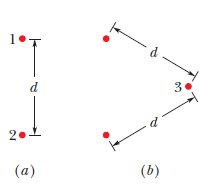
What would be the magnitude of the electrostatic force between two $$1.00\ C$$ point charges separated by a distance of $$1.00\ m$$
A particle of charge $$+3.00\times 10^{-6}C$$ is $$12.0\ cm$$ distant from a second particle of charge $$-1.50\times 10^{-6}C$$. Calculate the magnitude of the electrostatic force between the particles.
In figure, eight particles form a square in which distance $$d=2.0\ cm$$. The charges are $$q_1=+3e, q_2=+e, q_3=-5e, q_4=-2e, q_5=+3e, q_6=+w, q_7=-5e$$, and $$q_8=+e$$. In univector notation, what is the net electric field at the square's centre?
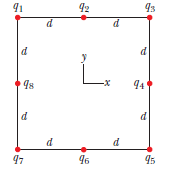
In Fig. Three identical conducting spheres form an equilateral triangle of side length $$d=20.0\ cm$$. The sphere radii are much smaller than $$d,$$ and the sphere charges are $$q_A=-2.00\ nC, \ q_B=-4.00\ nC,\ and\ a_C=+8.00\ nC$$. between spheres B and C?
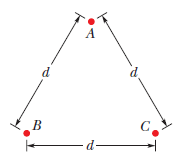
A neutron consists of ine "up" quark of charge $$2e/3$$ and two "down" quarks each having charge $$-e/3.$$ If we assume that the down quarks are $$26 \times 10^{-15}$$\ m$$ apart inside the neutron, what is the magnitude of the electrostatic force between them?
Figure shows a circular disk that is uniformly charged. The central $$z$$ axis is perpendicular to the disk face, with the origin at the disk. Figure gives the magnitude of the electric field along that axis in terms of the maximum magnitude $$E-m$$ at the disk surface. The $$z$$ axis scale is set by $$z_s=8.0\ cm$$. What is the radius of the disk?
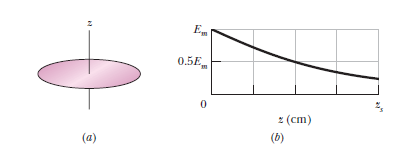
In Fig, the three particles are fixed in place and have charges $$q_{1}=q_{2}=+e$$ and $$q_{3}=+2e$$. Distance $$a=6.00 \mu m$$. What are the
magnitude
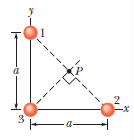
Of the charge $$Q$$ on a tiny sphere, a fraction $$\alpha$$ is to be transferred to a second, nearby sphere. The spheres can be treated as particle. What value of $$\alpha$$ maximizes the magnitude $$F$$ of the electrostatic force between the two spheres? What are the
Two charged particles are attached to an $$x$$ axis: Particle $$1$$ of charge $$-2.00\times 10^{-7}C$$ is at position $$x=6.00\ cm$$ and particle $$2$$ of charge $$+2.00\times 10^{-7}C$$ is at position $$x=21.0\ cm$$. Midway between the particle, what is their net electric field in unit vector notation?
A charged cloud system produces an electric field in the air near Earth's surface. A particle of charge $$-2.0\times 10^{-9}\ C$$ is acted on by a downward electrostatic force of $$3.0\times 10^{-6}\ N$$ when placed in this field.
What is the magnitude of the gravitational force $$\vec F_g$$ on the proton?
The force between two point charges kept at a distance $$r$$ apart in air is $$F$$. It the same charges are kept in water at the same distance, how does the force between them change?
A steady current is flowing in a cylindrical conductor.Does electric field exist within the conductor?
In Fig. $$22-35$$ the four particles form a square of edge length $$a=5.00\ cm$$ and have charges $$q_{1}=+10.0\ nC, q_{2}=-20.0\ nC, q_{3}=+20.0\ nC$$, and $$q_{4}=-10.0\ nC$$, In unit vector notation, what net electric field do not particles produce at the square's center?
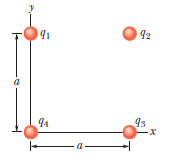
Charge is uniformly distributed around a ring of radius $$R=2.40\ cm$$, and the resulting field magnitude $$E$$ is measure along the ring's central axis (perpendicular to the plane of the ring). At what distance from the ring's centre is $$E$$ maximum?
In the radioactive decay of Eq. $$a^{238}U$$ nucleus transforms to $$^{234}Th$$ and an ejected $$^4He.$$ (These are nuclei, not atoms, and thus electrons are not involved.)When the separation between $$^{234}Th$$ and $$^4He$$ is $$9.0 \times 10-15^\ m$$, what are the magnitudes of the electrostatic force between then
Figure shows three circular centred on the origin of a coordinate system. On each arc, the uniformly distributed charge is given in terms of $$Q=2.00\ \mu C$$. The radii are given in term of $$R=10.0\ cm$$.
What are the magnitude?

The initial charges on the three identical metal spheres in Fig. are the following: sphere A, Q; sphere B, $$-Q/4$$; and sphere C, $$Q/2$$, where $$Q=2.00 \times 10^{-14} \ C$$. Spheres A and B are fixed in place, with a center-to-center separation of $$d=1.20\ m$$, which is much larger than the spheres. Sphere C is touched first to sphere A and then to sphere B and is then removed. What then is the magnitude of the electrostatic force between spheres A and B?
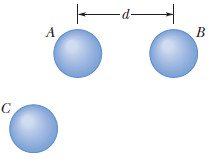
Is the force acting between two point charges $$q1$$ and $$q2$$ kept at some distance apart in air attractive or repulsive when (i) $$q1q2 > 0$$ (ii) $$q1q2 < 0$$?
A $$10.0\ g$$ block with a charge of $$+8.00 \times 10^{-5}C$$ is placed in an electric field $$\vec E=(3000 \hat i-600 \hat j)\ N/C$$. If the block is released from rest at the origin at time $$t=0$$, what is its $$y$$ coordinate at $$t=3.00\ s$$?
In figure, a nonconducting rod of length $$L=8.15\ cm$$ has a charge $$-1=-4.23\ fC$$ uniformly distributed along its length.
What are the direction (relative to the positive direction of the $$x$$ axis) of the electric field produced at point $$P$$, at distance $$a=12.0\ cm$$ from the rod?

What is the nature of electrostatic force between two point electric charges $$q_{1}$$ and $$q_{2}$$ if
(a) $$q_{1} + q_{2} > 0?$$
(b) $$q_{1} + q_{2} < 0?$$
A $$10.0\ g$$ block with a charge of $$+8.00 \times 10^{-5}C$$ is placed in an electric field $$\vec E=(3000 \hat i-600 \hat j)\ N/C$$. If the block is released from rest at the origin at time $$t=0$$, what is its $$x$$ coordinate at $$t=3.00\ s$$?
In Fig the three particles are fixed in place and have charges $$q_{1}=q_{2}=+e$$ and $$q_{3}=+2e$$. Distance $$a=6.00 \mu m$$. What are the
direction of the net electric field at point $$P$$ due to the particles?
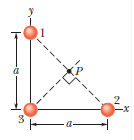
A $$10.0\ g$$ block with a charge of $$+8.00 \times 10^{-5}C$$ is placed in an electric field $$\vec E=(3000 \hat i-600 \hat j)\ N/C$$. What is the magnitude.
In figure, a nonconducting rod of length $$L=8.15\ cm$$ has a charge $$-1=-4.23\ fC$$ uniformly distributed along its length.
What are the magnitude ?

Five charges, $$q$$ each is placed at the corners of a regular pentagon of side $$a$$ as shown in figure. What will be the electric field at $$O$$, the centre of the regular pentagon?
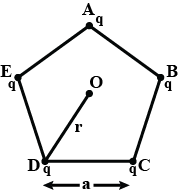
Can electric field at a point be zero, while electric potential is not zero
Five charges, $$q$$ each is placed at the corners of n-sided regular polygon of side $$a$$. What will be the electric field at $$O$$, the centre of the n-sided regular polygon? (See figure for analogy)
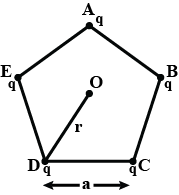
Five charges, $$q$$ each is placed at the corners of a regular pentagon of side $$a$$ as shown in figure. What will be the electric field at $$O$$ if the charge from one of the corners (say $$A$$) is removed?
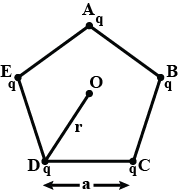
Five charges, $$q$$ each is placed at the corners of an n-sided regular polygon of side $$a$$ (see figure for analogy). What will be the electric field at $$O$$ if the charge $$q$$ at A is replaced by $$-q$$?
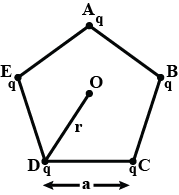
For two point charges and $$q_1$$ and $$q_2$$, $$q_1q_2 > 0$$. What is the nature of electrostatic force between two charges?
The electrostatic force between two protons placed at distance r is F. If we keep electrons in place of protons, then what would be the effect on the electrostatic force?
For two point charges $$q_1$$ and $$q_2 $$ , $$q_1q_2<0$$. What is the nature of electrostatic force between two charges?
The electrostatic force (F) acts between two point charges in a vacuum. If a brass plate is placed between the two charges. What would be the value of the electrostatic force?
The electric potential at a point $$ (x, y) $$ in an electric field is given by $$ V=6 x y+y^{2}-x^{2} $$ Calculate the electric field at that point.
Two point charges $$q_A=3\ \mu C$$ and $$q_B=3\ \mu C$$ are located $$20\ cm$$ apart in vacuum.
If a negative test charge of magnitude $$1.5\times 10^{-9}C$$ is placed at this point, what is the force experienced by the test charge?
What is the force between two small charged spheres having charges of $$2\times 10^{-7}$$ and $$3\times 10^{-7} C$$ placed $$30\ cm$$ apart in air?
A non-polar molecule with polarizability $$\beta$$ is located at a great distance $$l$$ from a polar molecule with electric moment $$p$$. Find the magnitude of the interaction force between the molecules if the vector $$p$$ is oriented along a straight line passing through both molecules.
Two point charges, $$q$$ and $$-q$$, are separated by a distance $$l$$, both being located at a distance $$l/2$$ from the infinite conducting plane. Find:
(a) the modulus of the vector of the electric force acting on each charge;
(b) the magnitude of the electric field strength vector at the mid-point between these charges.
Consider two electric dipoles in empty space. Each dipole has zero net charge.
(a) Does an electric force exist between the dipoles; that is, can two objects with zero net charge exert electric forces on each other?
(b) If so, is the force one of attraction or of repulsion?
The electrons in a particle beam each have a kinetic energy $$K$$. What are (a) the magnitude and (b) the direction of the electric field that will stop these electrons in a distance $$d$$?
A thin insulator rod is placed between two unlike point charges $$+{q}_{1}$$ and $$-{q}_{2}$$ (figure).
How will the forces acting on the charges change?

Coulomb's Law
A $$7.50-nC$$ point charge is located $$1.80 \,m$$ from a $$4.20-nC$$ point charge.
(a) Find the magnitude of the electric force that one particle exerts on the other.
(b) Is the force attractive or repulsive?
Coulomb's Law
(a) Find the magnitude of the electric force between a $$Na^{+}$$ ion and a $$Cl^{-}$$ ion separated by $$0.50 \,nm$$.
(b) Would the answer change if the sodium ion were replaced by $$Li^{+}$$ and the chloride ion by $$Br^{-}$$? Explain.
Consider a plane surface in a uniform electric field as in Figure, where $$d=15.0 cm$$ and $$\theta=70.0^{o}$$. If the net flux through the surface is $$6.00 N$$ ? $$m^{2}/C$$, find the magnitude of the electric field.

Two identical metal spheres having equal and similar charges repel each other with a force of 103 N when they are placed 10 cm apart in a medium of dielectric constantDetermine the charge on each sphere.
Two pith balls carrying equal charges are suspended from a common point by strings of equal length, the equilibrium separation between them is $$r$$. Fig. Now the strings are rigidly clamped at half the height. The equilibrium separation between the balls, now becomes.
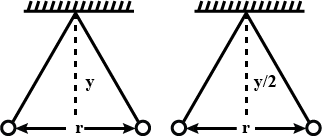
Two small spheres are charged positively, the combined charge being $$5.0\times { 10 }^{ -5 }C$$. If each sphere is repelled from the other by a force of $$1.0N$$ when the spheres are $$2.0$$ metre apart, how is the total charge distributed between the spheres?
At what point and what charge should be placed so that the entire system is in equilibrium?

The diagram shows the arrangement of three small uniformly charged spheres $$A,B$$ and $$C.$$ The arrows indicate the direction of the electrostatic forces acting between the spheres (for example, the left arrow on sphere $$A$$ indicates the electrostatic force on sphere $$A$$ due to sphere $$B$$). At least two of the spheres are positively charged. Which sphere, if any, could be negatively charged?

Two particles $$A$$ and $$B$$, each having a charge $$Q$$, are placed a distance $$d$$ apart. Where should a particle of charge $$q$$ be placed on the perpendicular bisector of $$AB$$ so that it experiences maximum force ? What is the magnitude of this maximum force ?
Two particles $$A$$ and $$B$$ having charges $$8 \times 10^{-6}C$$ and $$-2 \times 10^{-6}$$ respectively are held fixed with a separation of $$20 cm$$. Where should a third charged particle $$C$$ be placed so that it does not experiences a net electric force?
Two positively charged particles, each of mass 1.7 x $$10^{-27}$$kg and carrying a charge of 1.6 x $$10^{-19}$$ C are placed at a distance d apart. If each experiences a repulsive force equal to its weight, find the value of d.
The distance between electron and proton in the H-atom is about $$ 5.3 \times 10^{-11} $$ metre. What is the magnitude of electric force between these two particles?
$$ \left( \dfrac {1}{4 \pi \epsilon_0} = 9 \times 10^9 \dfrac {Nm^2}{C^2} \right) $$
Three equal changes $$2.0 \times 10 ^ {-6} C$$ each, are held fixed at the three corners of an equilateral triangle of side 5 cm. Find the Coulomb force experienced by one of the charges due to the rest two.
A total change Q is broken in two parts $$Q_1$$ and $$Q_2$$ and they are placed at a distance R from each other. The maximum force of repulsion between them will occur, when
Charge q is divided into two part and is placed at some fixed distance apart. What should be the value of the two parts such that force between them is maximum?
N fundamental charge each of charge 'q' are to be distributed as two point charges seperated by a fixed distance then the maximum to minimum force bears a ratio ( N is even and greater than 2 )
Two charges $$2 \cdot 0 \times 10 ^ { - 6 } \mathrm { C }$$ and $$1.0 \times 10 ^ { - 6 } \mathrm { C }$$ are placed at a separation of $$10 cm$$. Where should a third charge be placed such that it experiences no net force due to these charges?
Two neutral particle like identical metal balls each of radius r and mass m are connected by a light inextensible conducting thread of length L. The balls are held in free space with separation between their centres l (r << l < L). Now everywhere a uniform electric field directed along the line joining the centres of the balls is switched on and then the balls are released. Find maximum speeds of the balls in subsequent motion.
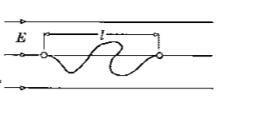
A circular wire-loop of radius $$a$$ carries a total charge Q distributed uniformly over its length. A small length $$dl$$ of the wire is cut off. Find the electric field at the centre due to the remaining wire.
A block of mass m having a charge q is placed on a smooth horizontal table and is connected to a wall through an unstressed spring of spring constant k as shown in figure. A horizontal electric field E parallel to the spring is switched on. Find the amplitude of the resulting SHM of the block.

A particle of mass m and charge q projected with a speed u at an angle$$\theta$$ above the horizontal, after travelling a horizontal distance$$ x_0 $$ enters a region where in addition to gravity a uniform static horizontal electric field also exists. Boundary of this region is vertical. If after some time, the particle returns to the point of projection, find magnitude of the electric field and time of flight of the particle. Acceleration of free fall is g and influence of the air is to be neglected.
In figure particle $$1$$ of charge $$+4e$$ is above a floor by distance $$d_1=2.00\ mm$$ and particle $$2$$ of charge $$+6e$$ is above a floor by distance $$d_2=6.00\ mm$$ horizontally from particle $$1$$. What is the x component of the electrostatic force on particle $$2$$ due to particle $$1$$?
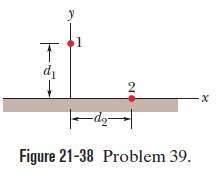
An electron enters a region of uniform electric field with an initial velocity of $$40\ km/s$$ in the same direction as the electric field, which has magnitude $$E=50\ N/C$$.
How far does the electron travel during the $$1.5\ ns$$ interval?
Of the charge $$Q$$ initially on a tiny sphere, $$a$$ portion $$q$$ is to be transferred to a second, nearby sphere. Both spheres can be treated as particles and are fixed with a certain separation. For what value of $$q/Q$$ will the electrostatic force between the two sphere be maximized?
Two engineering students, John with a mass of $$90\ kg$$ and Mary with a mass of $$45\ kg$$, are $$30\ m$$ apart. Suppose each has a $$0.01 \%$$ imbalance in the amount of positive and negative charge, one student being positive and the other negative. Find the order of magnitude of the electrostatic force of attraction between them by replacing each student with a sphere of water having the same mass as the student.
In figure, three identical conducing spheres initially have the following charges: sphere $$A, 4Q$$; sphere $$B, -6Q$$; and sphere $$C, 0$$. Sphere $$A$$ and $$B$$ are fixed in place, with a center-to-center separation that is much larger than the spheres. Two experiments are conduced. In experiment $$1$$, sphere $$C$$ is touched to sphere $$A$$ and then (separately) to sphere $$B$$, and then it removed. In experiment $$2$$, starting with the same initial state, the procedure is reversed: Sphere $$C$$ is touched to sphere $$B$$ and then to sphere $$A$$, and then it is removed. What is the ratio of the electrostatic force between $$A$$ and $$B$$ at the end of experiment $$2$$ to that at the end of experiment $$1$$?
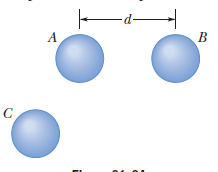
Identical isolated conducing sphere $$1$$ and $$2$$ have equal charge and are separated by a distance that is large compared with their diameters. The electrostatic force acting on sphere $$2$$ due to sphere $$1$$ is $$\vec F$$. Suppose now that a third identical sphere $$3$$, having an insulting handle and initially neutral, is touches first to sphere $$1$$, then to sphere $$2$$ and finally removed. The electrostatic force that now acts on sphere $$2$$ has magnitude $$F'$$. What is the ratio $$F'/F$$?

The variation of electric potential for an electric field directed parallel to the x-axis is shown in the given graph. Draw the variation of electric field strength with x-axis.
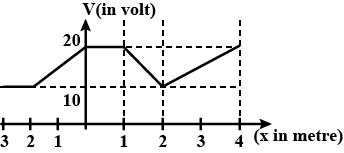
Electric charge Q is divided into two parts $$Q_1$$ and $$Q_2$$ placed at distance r. What would be the condition for the maximum force of repulsion between the charges?
An electron has an initial velocity of $$(12.0\hat{j}+15.0\hat{k}) km/s$$ and a constant acceleration of $$(2.00\times10^{12}m/s^{2})\hat{i}$$ in a region in which uniform electric and magnetic fields are present. If $$\vec{B}=(400\mu T)\hat{i}$$, find the electric field $$\vec{E}$$.
Analysis Model: Particle in a Field (Electric)
A small object of mass $$3.80 \,g$$ and charge $$-18.0 \mu C$$ is suspended motionless above the ground when immersed in a uniform electric field perpendicular to the ground. What are the magnitude and direction of the electric field?
Three equal positive charges $$q$$ are at the corners of an equilateral triangle of side a as shown in Figure. Assume the three charges together create an electric field. (a) Sketch the field lines in the plane of the charges.(b) Find the location of one point (other than $$\infty$$) where the electric field is zero. What are (c) the magnitude and (d) the direction of the electric field at P due to the two charges at the base?

A solid insulating sphere of radius $$5 cm$$ carries electric charge uniformly distributed throughout its volume.Concentric with the sphere is a conducting spherical shell with no net charge as shown in Figure O Q24.The inner radius of the shell is $$10 cm$$, and the outer radius is $$15 cm$$. No other charges are nearby. Rank the magnitude of the electric field at points $$A$$ (at radius
$$4 cm$$), $$B$$ (radius $$8 cm$$), $$C$$(radius $$12 cm$$), and $$D$$ (radius $$16 cm$$) from largest to smallest.Display any cases of equality in your ranking.
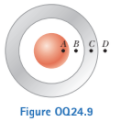
A uniformly charged rod of length L and total charge $$Q$$ lies along the x axis as shown in Figure. (a) Find the components of the electric field at the point $$P$$ on the y axis a distance $$d$$ from the origin. (b) What are the approximate values of the field components when $$d >> L$$? Explain why you would expect these results.
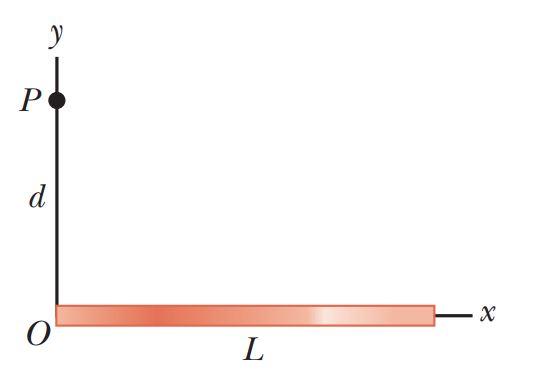
Challenge Problems (89)
A line of charge with uniform density $$35.0 \,nC/m$$ lies
along the line $$y = -15.0 \,cm$$ between the points with
coordinates $$x = 0$$ and $$x = 40.0 \,cm$$. Find the electric
field it creates at the origin.
A solid insulating sphere of radius $$5 cm$$ carries electric charge uniformly distributed throughout its volume.Concentric with the sphere is a conducting spherical shell with no net charge as shown in Figure O Q24.The inner radius of the shell is $$10 cm$$, and the outer radius is $$15 cm$$. No other charges are nearby. Similarly rank the electric flux through concentric spherical surfaces through points $$A$$, $$B$$, $$C$$, and $$D$$.
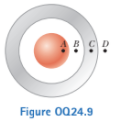
Conductors in Electrostatic Equilibrium
A long, straight metal rod has a radius of $$5.00 cm$$ and a charge per unit length of $$30.0 nC/m$$. Find the electric field (a) $$3.00 cm$$, (b) $$10.0 cm$$, and (c) $$100 cm$$ from the axis of the rod, where distances are measured perpendicular to the rods axis.
A uniform electric field $$E = 3 000 \,V/m$$ exists within a certain region. What volume of space contains energy equal to $$1.00 \times 10^{-7} J$$? Express your answer in cubic meters and in liters.
A current density of $$6.00\times 10^{-13} A/m^{ }$$ exists in the atmosphere at a location where the electric field is $$100 V/m$$ . Calculate the electrical conductivity of the Earth’s atmosphere in this region.
Two identical conducting balls A and B have charges $$-Q$$ and $$+3Q$$ respectively. they are brought in contact with each other and then separated by a distance d apart. Find the nature of the Coulomb force between them.
Class 12 Engineering Physics Extra Questions
- Alternating Current Extra Questions
- Atoms Extra Questions
- Current Electricity Extra Questions
- Dual Nature Of Radiation And Matter Extra Questions
- Electric Charges And Fields Extra Questions
- Electromagnetic Induction Extra Questions
- Electromagnetic Waves Extra Questions
- Electrostatic Potential And Capacitance Extra Questions
- Magnetism And Matter Extra Questions
- Moving Charges And Magnetism Extra Questions
- Nuclei Extra Questions
- Ray Optics And Optical Instruments Extra Questions
- Semiconductor Electronics: Materials,Devices And Simple Circuits Extra Questions
- Wave Optics Extra Questions


